Ceramic tiles vs Vitrified tiles – The real difference between ceramic and vitrified tile is still out of reach to a consumer. For an average consumer Ceramic tiles, vitrified tiles/ porcelain tiles, etc are simply tiles used for flooring or cladding works because all are installed in the same way, got almost identical looks, got similar merits and demerits as a flooring material. On enquiring, you may get a lot of merit claims which confuses more than clarifying.
What exactly is the difference between these tiles or is it simply a marketing technique for selling out the more costly option?
Must read : Types of Vitrified tiles
What is a ceramic tile?
The tile is a very thin flooring material made of clay, stone, metal, etc extensively used for covering floors, roof, walls, etc. Enormous varieties like ceramic tile, vitrified tile, porcelain tile, terrazzo tile, chequered tile, metal tiles, stone tiles, etc are used as flooring materials based on the area of application and requirements. The category of tiles manufactured from natural clay, mixed with other ingredients, baked in kilns, and glazed for protection and looks are called ceramic tiles. Ceramic and vitrified/porcelain tiles come under the category of ceramic tiles whereas vitrified tiles are known non-porous ceramic tiles.
Classification of tiles
The classifications of tiles are mostly based on their method of manufacturing, water absorption qualities, choice of application, area of usage, strength, etc. The most commonly used tiles are ceramic and vitrified tiles or porcelain tiles. The classification criteria are the percentage of water absorption which is around 4-5% in ceramic tiles where as it is below 0.5 % for vitrified tiles. Please refer above figure for the classification of tiles.
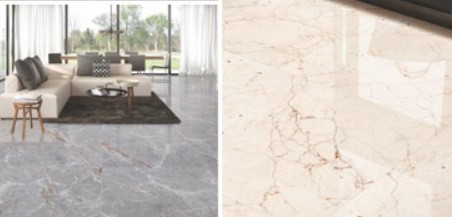
Ceramic tiles – Properties
These are the most commonly used tiles available in a lot of designs, textures, and patterns and are used for almost every flooring applications. They are durable, comparatively cheap, and strong flooring material available in a lot of designs, colours, and textures. These tiles are easy to cut and fix and consists of a glazing coating for enhancing the protection. and are widely used in residential construction due to their versatile colour choice and designs and are capable of withstanding reasonable traffic and retain the sheen and charm for an extended period if maintained properly.
Reference IS CODE = IS 15622 – 2017
| Water absorption | 3% -6% |
| Breaking strength | Minimum – 1000 N |
| Modulus of rupture | 20 to 30 N/mm2 |
| Scratch hardness (Moh scale) | 4 minimum |
These types of tiles are not preferred in high traffic areas and outdoors due to their low density and high water-absorbing qualities.
Ceramic tile manufacturing process
Ceramic tiles are manufactured from natural clay, sand, and water. The ingredients are ground and mixed with water in the right proportions to form a paste. The mix is pressed or extruded to form a tile and passed through a drying process for imparting the strength. The pattern, design, or textures are digitally printed on the surface and sprayed with a glaze powder before passing through the kiln for the firing process.
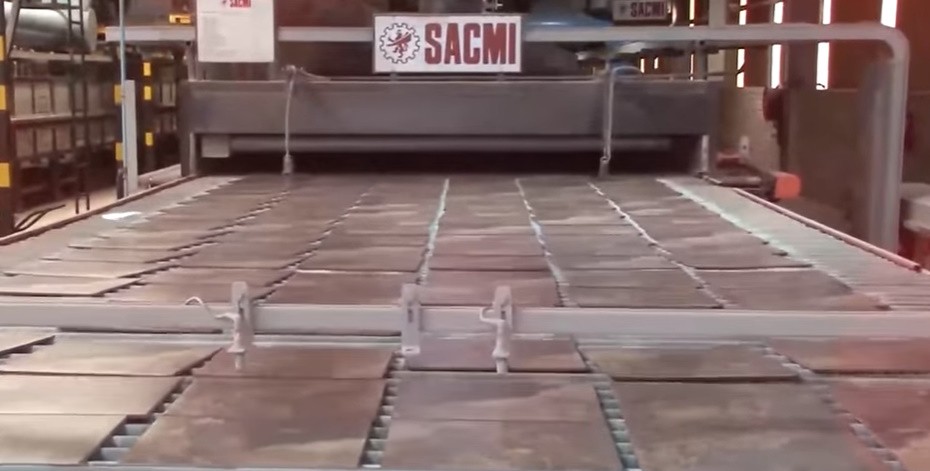
In the first stage, the tiles are subjected to medium temperatures for removing the water content, and in the next stage, the kiln temperature is raised to 1000-1200 degrees. In high temperature, the glaze fuses and forms a transparent layer on the tile surface. Further, the tiles are subjected to a curing process before exposure to ambient temperature to avoid breakage.
Type of ceramic tiles
Ceramic tiles are classified into wall tiles and floor tiles. They are available in glazed and un-glazed varieties. Ceramic wall tiles are normally less durable than vitrified tile which is designed specifically for flooring. Most wall tile is glazed with a semi-gloss or matt surface. The glazed surface has a very low slip resistance and becomes slippery when wet. Therefore, glazed wall tile is much more suited for wall or counter-top applications rather than floors. Floor tiles are available in anti-skid and matt finishes which are used for flooring, bathrooms, and wet areas.
Advantages of ceramic tiles
Ceramic tiles are one of the most affordable, durable, and aesthetic flooring options in the residential construction sector. Ceramic tiles inherit a hand full of excellent properties making them the most preferred flooring options. Proper placing and regular care can maintain the charm, glaze, and sheen of ceramic tiles for a long-lasting period.
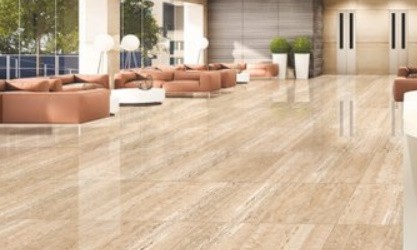
Water resistant & Stain resistant
Ceramic tiles got a protective glazing layer on the surface and are impenetrable to water and stains. This glazing layer also protects the designs and textures and can also resist humidity to some extent. Because of these properties, Ceramic tile is preferred for moist environments like kitchen, bathrooms, etc.
Durability
Ceramic tiles are very strong, durable, and abrasion-resistant. Proper workmanship accompanied by regular maintenance can make ceramic tiles last for years. Broken tiles can be easily replaced without damaging other nearby tiles. The glazing coating is very hard and does not dent or scratch easily. They can be used for heavy traffic areas like living rooms, office space, bedrooms, etc.
Maintenance of ceramic tiles
Ceramic tiles are stain-resistant and very easy to clean and maintain using mild detergents. Ceramic tiles got a smooth and hard surface and do not attract or absorb dust, mites, and other micro-organisms which causes allergy and other asthmatic issues. Both un-glazed and glazed tiles can provide a long-lasting resilient and essentially an easy to maintain option for your home.
Colour/texture choice and affordability
Ceramic tiles are available in countless colors as well as textures, different looks and patterns can be created with flexible tile sizes. They can also be printed to reproduce the look of many hardwoods and natural stones. They can match almost any color scheme or theme. After the introduction of digital printing technology, we can print anything on ceramic tiles.
Ceramic tiles are not so costly compared to any other type of flooring material. They are rather not cheap also. But they are affordable considering the investment and the life of the ceramic tile. They are very easy to place and maintain will last a lifetime if properly installed and cared for.
Environmental friendly
Ceramic tiles are made from clay, sand, and glass. Nowadays ceramic tiles are made from recycled industrial wastes and considered environment friendly material. Ceramic tiles have insulating properties that can make the rooms cooler in summer and warmer in winter thus reducing the energy costs.
Disadvantages of Ceramic tiles
Easy to care for and available in hundreds of styles, nonetheless there are disadvantages that should be taken into consideration when a homeowner is choosing ceramic installation for the home. On getting clarity on the drawbacks we can make an easy choice.
Tile joints
Ceramic tiles are stain-resistant and water-resistant. But Grout lines are suspectable to moisture if not sealed properly. Care should be taken in choosing the sealant and sealing of grout lines. The tile joints have to be periodically sealed to restrict moisture entry and increase the tile life.
For installation, we need skilled workers to maintain the level and alignment. A proper laying is the most important factor deciding the tile life.
Ceramic tiles got a wide variety of colours and shades and the shades’ textures and style and choice of interiors tend to change with time. Once a ceramic tile is installed, replacing it will be a messy and costly option. Replacing a broken tile needs highly skilled workers and tools or else chance of breakage of nearby tiles will happen.
Ceramic tiles are very cold and it is very uncomfortable in winter times to stand on the tile. Area rugs has to be provided to cover up the area. Ceramic floors also retain heat during summers.
These tiles are denser and heavier than other flooring materials. They give extra dead load on the structure.
Conclusion
Considering the unique properties, added with a wide choice of colours and shades, and excellent resistance to stain and moisture, easy to clean and maintain Ceramic tiles are the most preferred flooring choice.

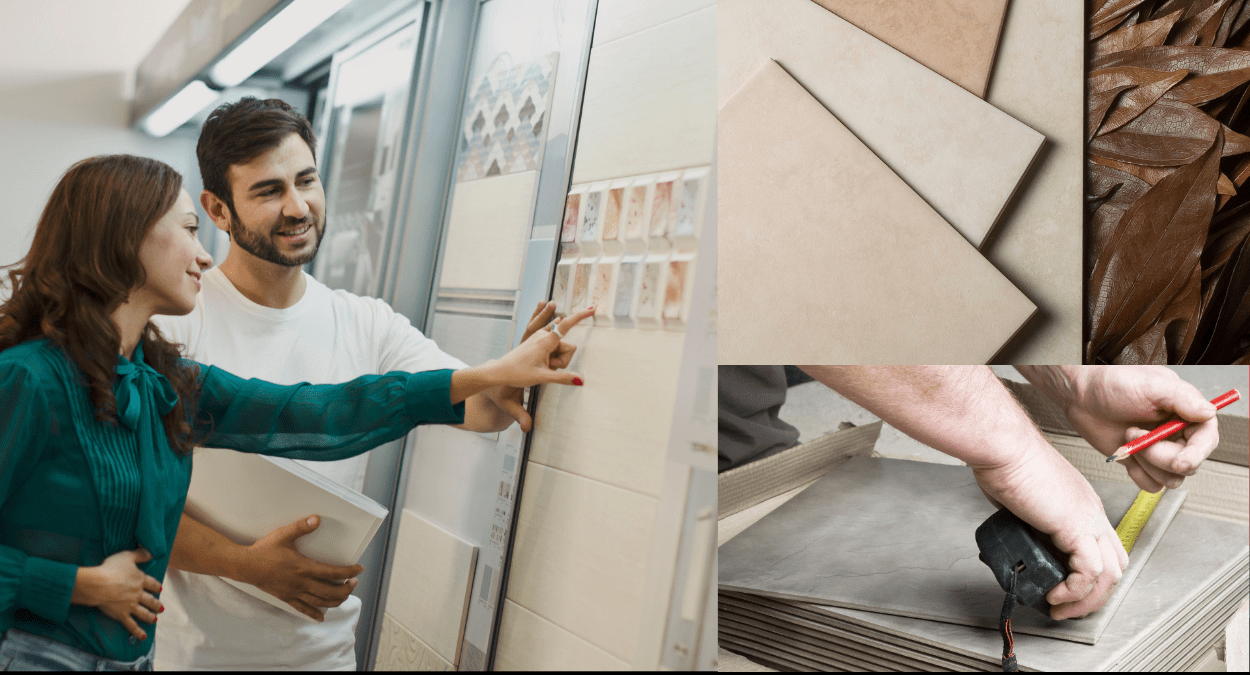
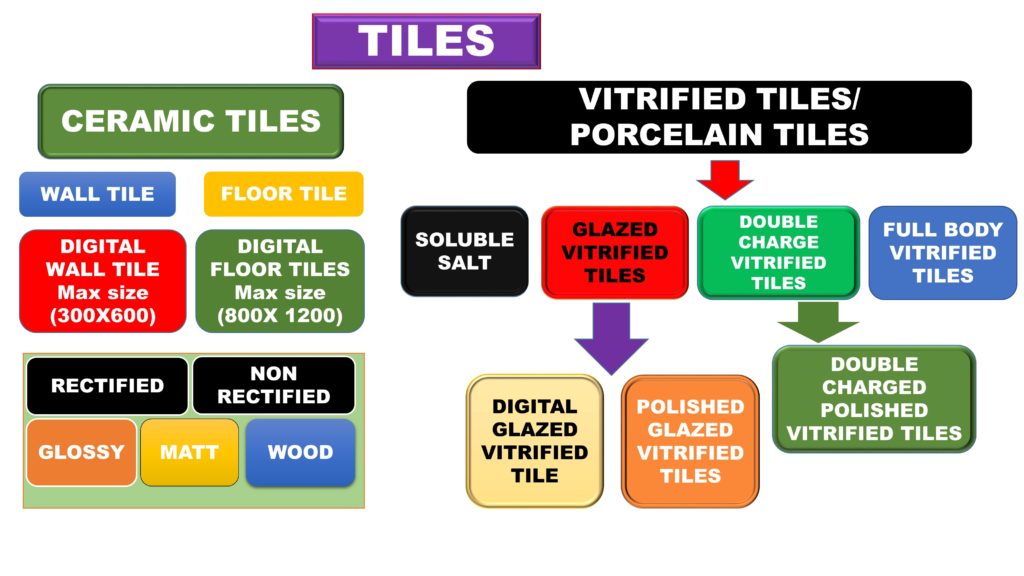
Comments are closed.